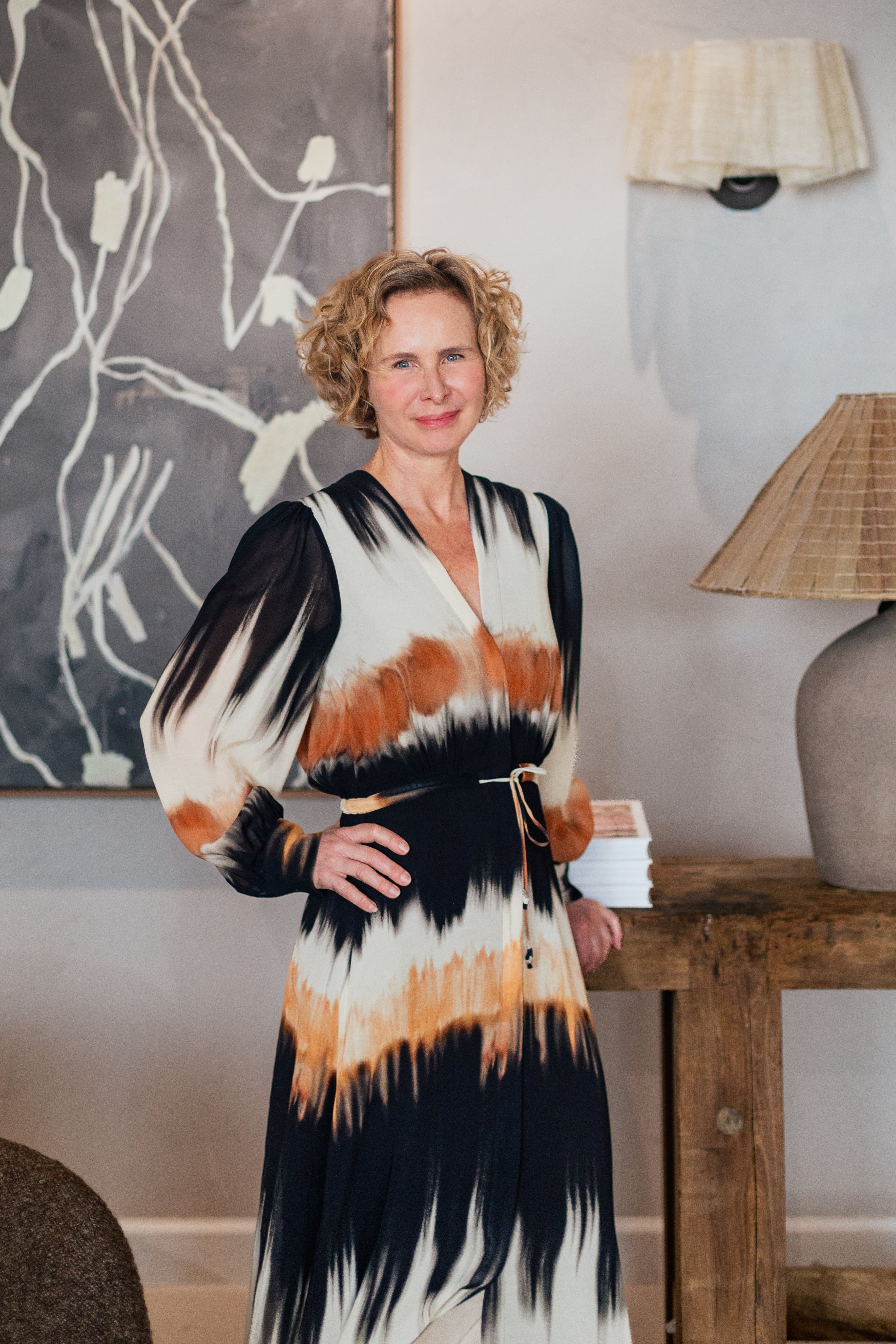The 50 States Project is a series of candid conversations with interior designers across the country about how they’ve built their businesses. This week, Indianapolis-based designer Heidi Woodman of Haus Love Interiors tells us how she implemented a $1 million minimum, why she offers clients a choice between a flat fee and a revolving retainer, and why taking the wrong client isn’t worth any amount of money.
Did you always know you wanted to be a designer?
No, but it was always a passion for me. I had moved to Germany after high school and lived there for about a year, then moved to San Diego, where I took art classes at San Diego State and waited tables. I became an art major, but the first couple of years were mostly humanities classes that bored me to death, so I would sometimes skip class to go to the bookstore and peruse design magazines. I was young, and I didn’t really read into it or know that meant something—I just thought I was skipping class, you know?
I got really sick while I was in school—I got cancer, so I had to put everything on pause to go through treatment. That’s when I moved home to Indiana. I told myself that if I got through it, I would open up a store. I needed a change—I didn’t want to go back to school. So when I was cancer-free in 2000, that’s what I did.
What was it about having a store that appealed to you?
My mom is German, and we traveled to Germany often—visiting and supporting the community there was always really important to us as a family. For me, that definitely carried through, and I love supporting small local boutiques in Indiana. But they’re also not that prominent here. It’s a traditional state, and I wanted to bring some edginess to my community. So I did! I had no money—I started out with a little 600-square-foot space. I was a waitress at night and my husband’s a firefighter. We had to scrape. I would thrift and get super creative about what I brought into the store because I just didn’t have a lot of money, but I loved what I was doing. And Haus Love just slowly grew from there.
My store was successful, and as I developed a presence in the community, my customers started asking me to help them with their homes and I would do a little bit of styling. I had no idea what I was doing, but again, I absolutely loved doing it. I was so honored and excited that they wanted me to help them in their home. So that is how design started for me.
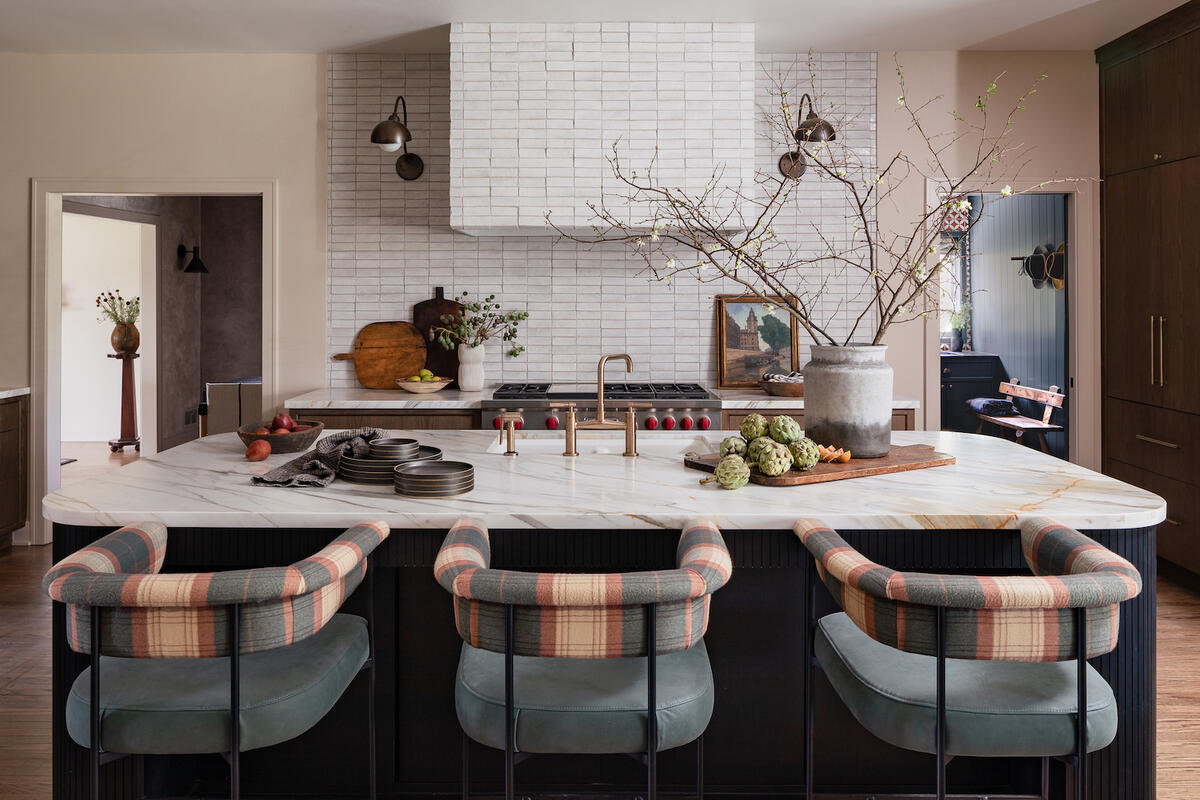
When did you realize you needed to hire someone, and how did you start to develop a team to support the interior side of the business?
Because I did not go to design school, I had to learn AutoCAD and SketchUp on the side. Around 2015, I decided that I needed to bring in some help. I knew I had an obligation to give my clients [those services], but it was just too overwhelming for me. In the beginning, I grew my team by bringing on art, architecture and interior design students who had that background and knowledge.
When I hire now, I find that students in art school often know AutoCAD, and they understand the type of design we do, which is very conceptual, because that is what I learned in art school. We really try to figure out the client’s story, and we want to tell that story through design; it’s never just putting furniture in someone’s home. From there, I teach them how we do design development, and it’s actually worked out great. I have found that if they have a background in art, they really have that creative side to design. The AutoCAD is technical, and they can learn that, but if you don’t understand design, that’s a problem. There are some interior design students who just don’t understand the creative side. They get the layout, but there’s so much more to it, and that’s what we are known for.
Do you still typically hire students?
Yes. In the beginning it was because I couldn’t afford to hire a senior designer—they’re expensive. Now, I’m at the point where if I need a lead designer, they have to come on with at least three years of experience at a high-end design firm. My junior designers can still be fresh out of school.
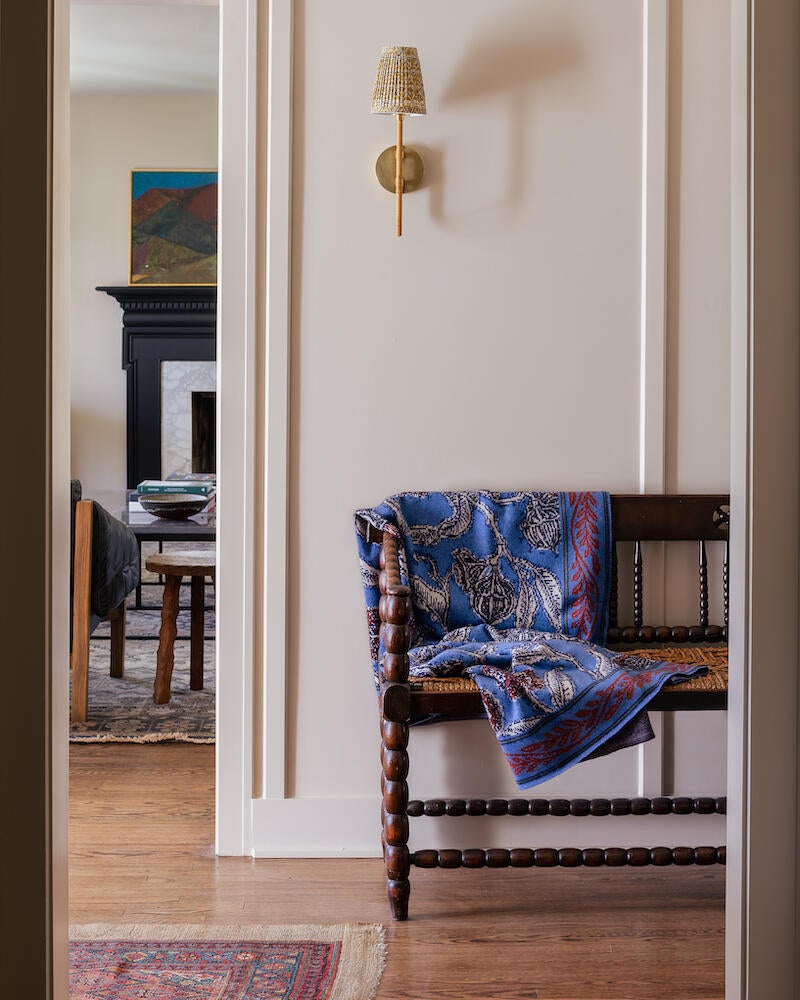

What does your team on the design side look like today?
We have a design director right underneath me—I’m always on the go, so she takes care of the firm when I’m not there—and then four lead designers and three junior designers. We have a project manager, an expediter who takes care of logistics, and an amazing shop girl—in addition to running the shop, she helps with design installs and other things here and there. And I just hired a business developer.
What does it look like to bring someone on in that role?
Jessica is amazing. She is actually a former client, and she became a really good friend of mine. She’s a fabulous businesswoman, and her husband is one of the top real estate agents in the city, so I reached out to her to help me find a new space. But as I started talking to her, she had some great recommendations for growing my business. Now that I hired her, she’s working on trying to get me more exposure, which I’m not the best at.
It can be so uncomfortable to do for yourself.
It feels a little braggy. I try to be super intentional, and I want this to be very organic. So I always have to remind her that I don’t want to force anything, you know? If it happens, it happens. I don’t really think about growing the business, but I’m sort of the breadwinner of my family, so it is important for me to think about that, and I need help with it. It’s been great.
How has your role in the firm evolved as your team has grown?
In the beginning, I did absolutely everything. Now, I call myself the creative director—well, that’s what Jessica gave me as a title, and it’s really true. So the team presents to me at the beginning of design development, and we come up with a story. I lead my team through the story, give them a direction, and then I have them take it from there. I check in with them throughout design development, and they will come to me during the presentation. That’s when I edit and tell them what changes to make. So I’m still really involved in the process, but I have found that what’s really important is for me to be at all of the client-facing appointments. My clients really want to see me there—they want to know that I’m involved. And because I have to be at almost all of the appointments, it’s hard for me to still be in the studio and behind the scenes in all the nooks and crannies of design.
Does the lead designer on the project come to those client-facing meetings as well? How much is your team in touch with the client?
The lead is at all of the meetings, and the junior is probably at about 50 percent of the meetings. We have about 15 clients right now, so it’s a lot of meetings—I had a meeting yesterday with an architect that lasted three hours. And it’s a lot of client-facing meetings right now, which I love. I want them to feel taken care of.

You have worked all over the country. How have you cultivated a cross-country portfolio?
About 50 percent of our clients are out of state, but we do much of our work remotely—it is absolutely amazing how much we can do from here. For one New Jersey project, we went out there two times: We flew out at the very beginning, when they were putting up the studs, and we helped design the kitchen; then we flew out at the very end for install. I was so proud of my team, because that’s tough to make sure that all of your measures are correct and everything is to scale. It’s really hard, but it can be done. And it makes me happy, because I love my out-of-state clients—Indiana is quite traditional, and the out-of-state jobs are a little bit edgier.
How do clients find you typically? And how do you decide what projects you say yes to?
It’s definitely Instagram—it’s crazy how many inquiries I get through Instagram—and locally, word of mouth. I don’t advertise at all.
When I started out, I took every single inquiry that came to me. That was difficult because not everyone is the nicest person in the world, and it doesn’t feel good to be treated a certain way. Now I feel like I’m at the point in my career where, if I know it’s not going to be a good fit, I can say no and I’m not scared about it. And it’s a really good feeling. It also feels like it’s dishonoring a client to take a project just for the money when you know it’s not a good fit.
My clients have to be nice—it’s so important to me that we have a respectful relationship [that goes] both ways. And it feels so good to know that I can make that choice to work with a client that is a good fit versus not a good fit. We only take 10 percent of the inquiries that we receive.
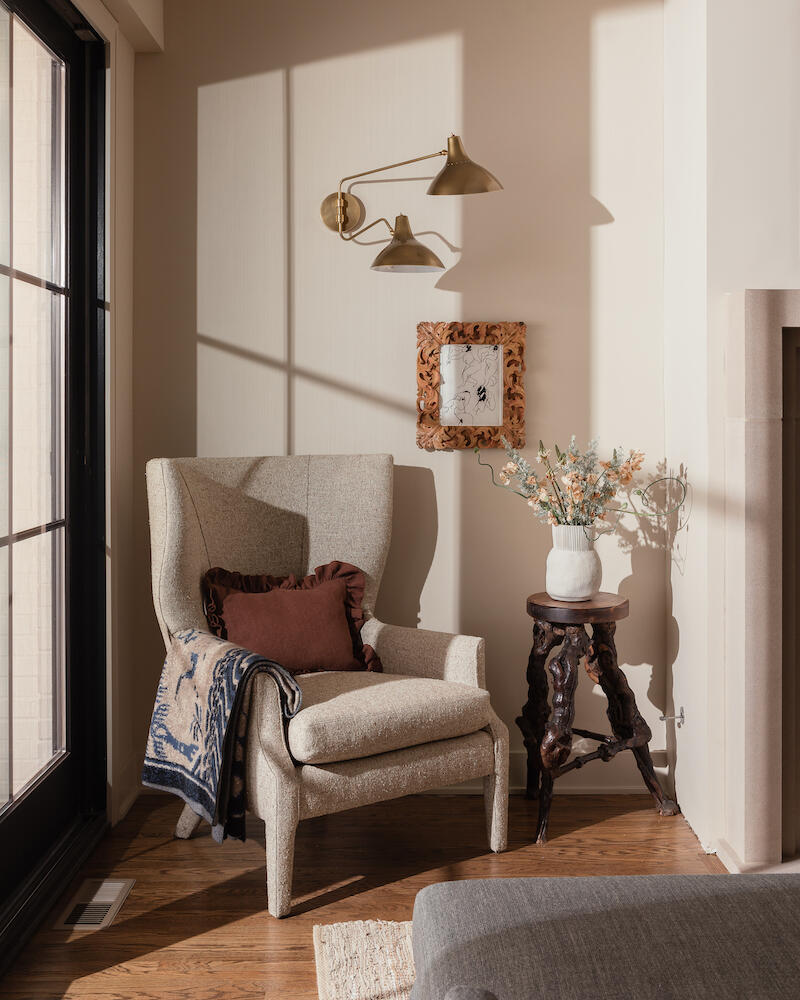

Beyond the emotional connection, is there a certain scope threshold that you are looking to meet at this point?
We don’t take on a project if the construction or the remodel budget is under $1 million. That’s where we start—and that’s honestly a little bit low, but we still take it if the home is older, because I love working on historic homes. I love them all, but there’s just something about an older home that really speaks to me. I think it goes back to me being an old soul—I’ve been around this earth many times, so it doesn’t surprise me that I love historic homes. So that’s where we make an exception: If a client reaches out with a fabulous home and a decent budget and wants to redo a few rooms, we will absolutely take on that project. If I know I can use it in my portfolio and if I know we’re going to have fun, I will make an exception. But because my team is so big, my payroll is huge now, so we also have to make sure that these projects can support my team and my family—that’s the business side of it.
How have you approached billing for your work, and how do you talk about money with clients?
We talk about money in the very beginning, and we are very transparent about it. I have an investment package that I send out to prospective clients before they even meet with me so that they really understand the financial side of the project. By the time we get to the interview and client onboarding [stage], we know that they’re OK with how we bill.
For design hours, we give them an option to pay us with a flat fee, or we bill them in $20,000 retainer increments. We try to estimate how many retainers we will go through on the project, but we definitely emphasize that it’s just an estimate, because some clients can make decisions quickly and others cannot.
In the past, we’ve had some conflicts about how we bill, and it’s because I didn’t have that conversation in the beginning. I think I was scared. But now, I’m more comfortable in my career, and I’m OK with clients not being OK with how we bill. That’s a big reason why we only take on 10 percent of the people who inquire—because some of them are not OK with it. Maybe it’s too much for them, and that’s OK. But having that conversation upfront is an integral part of the process.
We send clients an invoice through Studio Designer every two weeks—it’s a very detailed invoice of exactly where their hours have gone so that they can feel comfortable knowing where their money is going. We are super diligent and detailed about our billing, because it’s personal—it’s their money they’re giving us, and it’s a freaking crap-ton of money, so we want to be respectful of that. That approach has helped a ton.
What makes people pick between those retainers versus paying a flat fee?
A lot of our new builds are going with a flat fee, and I’ll tell you why: Husbands [often] want to know exactly what the investment is going to be for the entire project and don’t want to write one more check. And look, I get it—I actually feel like they’re a little bit happier in the end when we do a flat fee because we’re not constantly asking them for more money. I would say more of the remodels are on a revolving retainer, and that’s fine, too. To be honest, we probably make more money on the revolving retainer.
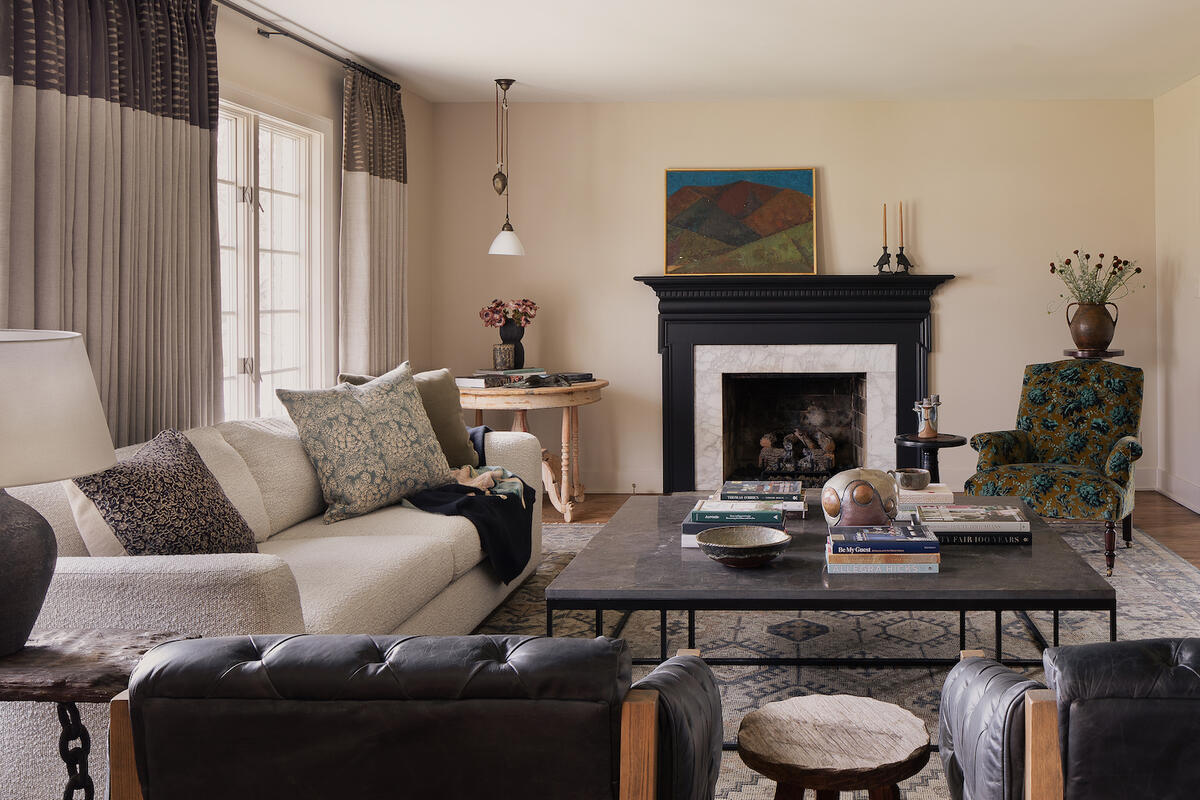
How do you think about employee retention? Especially as you hire ambitious young people right out of school, what’s your approach to keeping your team members feeling like they’re growing?
I had always had a very high retention rate, and that was very important to me. Then, over a few months, I lost my entire team during Covid—literally everyone decided that they needed a career change. I didn’t think I was going to make it, and it was the hardest time of my life. But I meditated on it and I tried to stay positive—and actually, the team that I have now is the best team that I’ve ever had. So it’s good to be shaken up or to be scared every now and then, because it makes you really think about your business and what needs to change.
Right now, we are discussing going to a four-day workweek. It’s trending in Europe, so I’ve been talking about that with my mom and my cousins in Germany a lot. I think it’s the most wonderful thing ever, so we’re going to try it—I talked to my bookkeeper yesterday, and we decided that we’re going to try to make it work slowly. We’re not going to implement a four-day workweek every single week—I think we’re going to try to do two weeks a month and see how that goes. It’s so important for me to know that my team has a good work-life balance. I also take them on a lot of trips. They go with me on my sourcing trips to flea markets, as well as to High Point Market and New York.
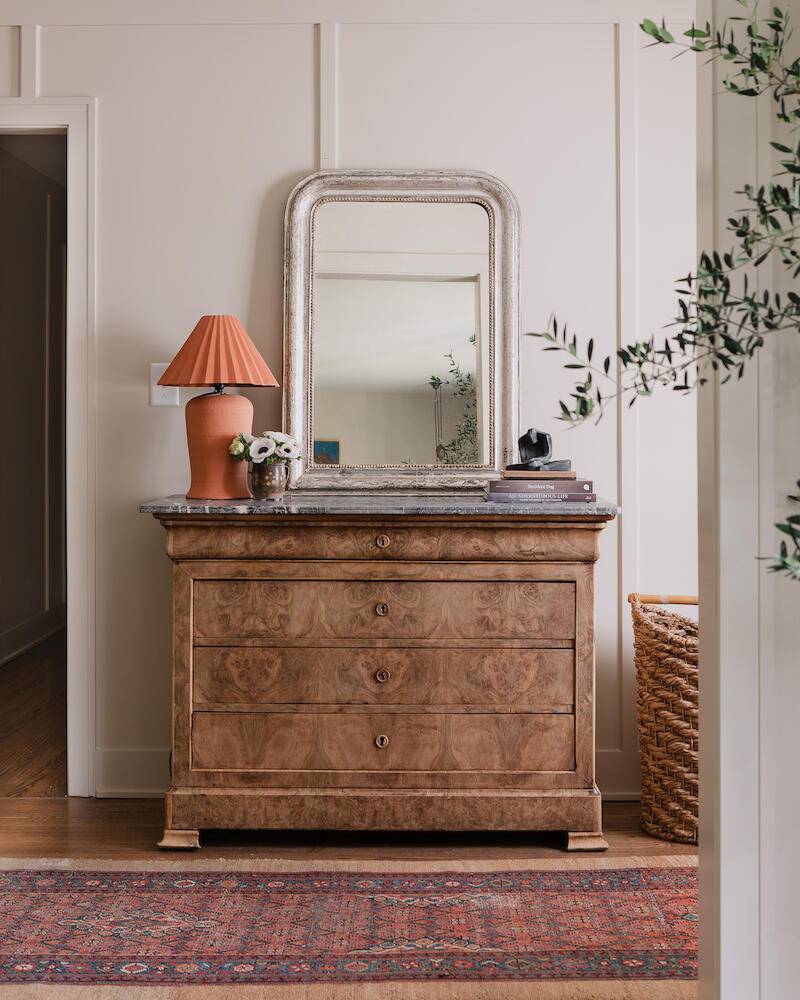
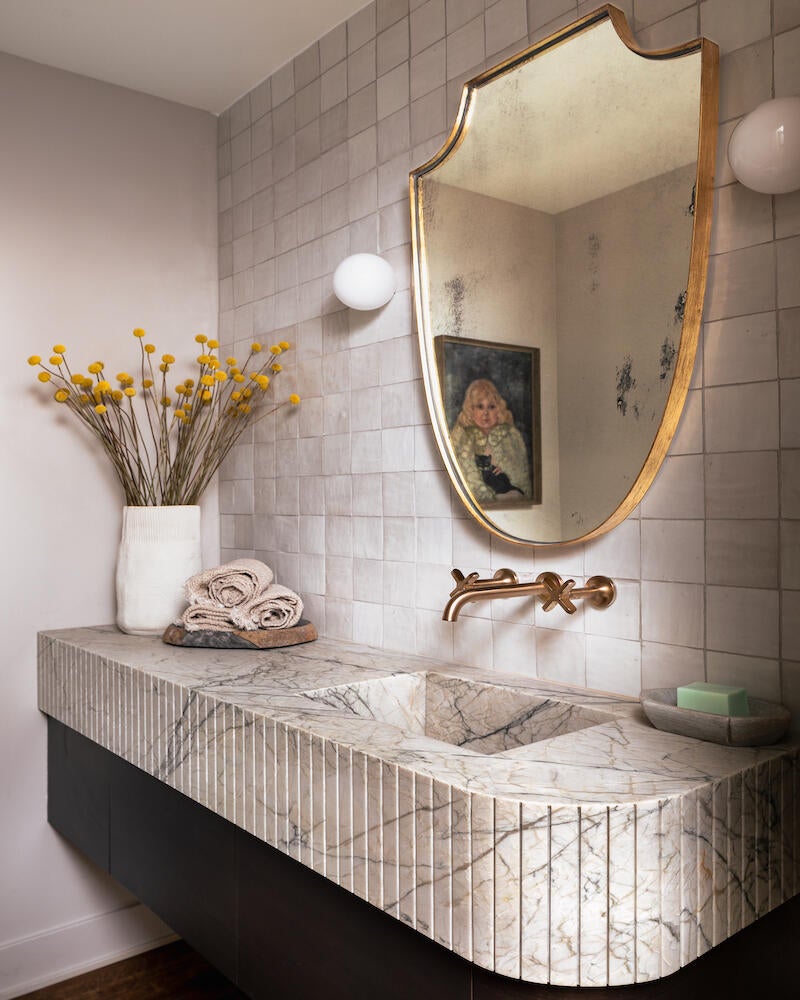
You mentioned that social media has fueled Haus Love’s growth. What’s your strategy on Instagram?
I love to explain my thought process in design to my audience. It’s funny that you ask, because Jessica, my business developer, is pushing me to hire a social person. But I love doing it myself—I love writing.
So it’s been you this whole time?
It’s been me. I love it so much. The only problem is that I can’t keep up with responding to everyone, and that makes me feel bad. So although I want it to always be my voice, I am going to hire someone just to stay in touch with everyone, because I get a lot of DMs and I just don’t have the time. Also, the way my mind works, I can’t be on Instagram a lot—it’s not good for me. And I don’t want my boys to also see me on Instagram a lot, because I don’t want them to be on it. So we’re in the middle of looking for someone right now, but it will always be my voice.
I really just try to post what I’m feeling for the day. I go to my portfolio and look at the pictures that speak to me and think about what I want to talk about. Sometimes I will talk about the client story; other times, I will talk about the process that we went through while picking out the marble profile in a bathroom. But mostly, I look through my portfolio and grab what speaks to me, and it just kind of works out.
I also like for [Instagram captions] to have a little bit of a sense of humor, because I don’t want people to think that I’m this serious, always-professional interior designer. I want to be relatable. I’ve had the girls film me in sweatpants, no shower, because I want my audience to feel like they can relate to me. I’m not perfect, I make mistakes, and it’s really important to me that my audience sees that. Even though I work in these high-end homes, I post about the things that happened that weren’t so good, too, and I think my audience really appreciates that.
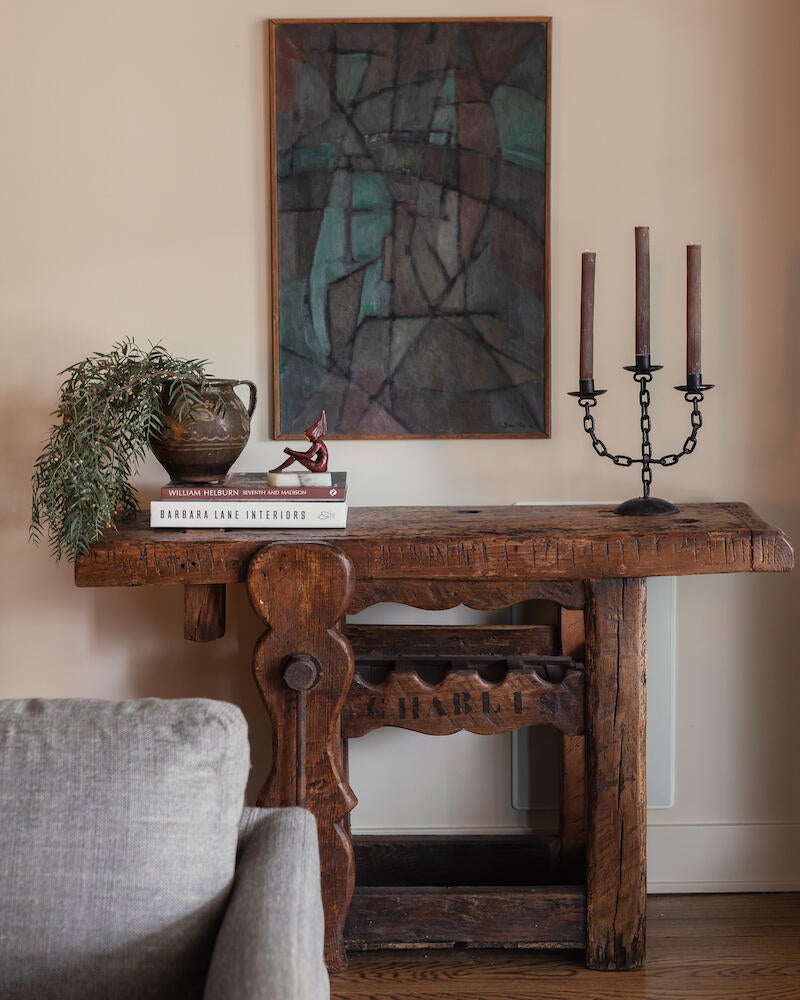
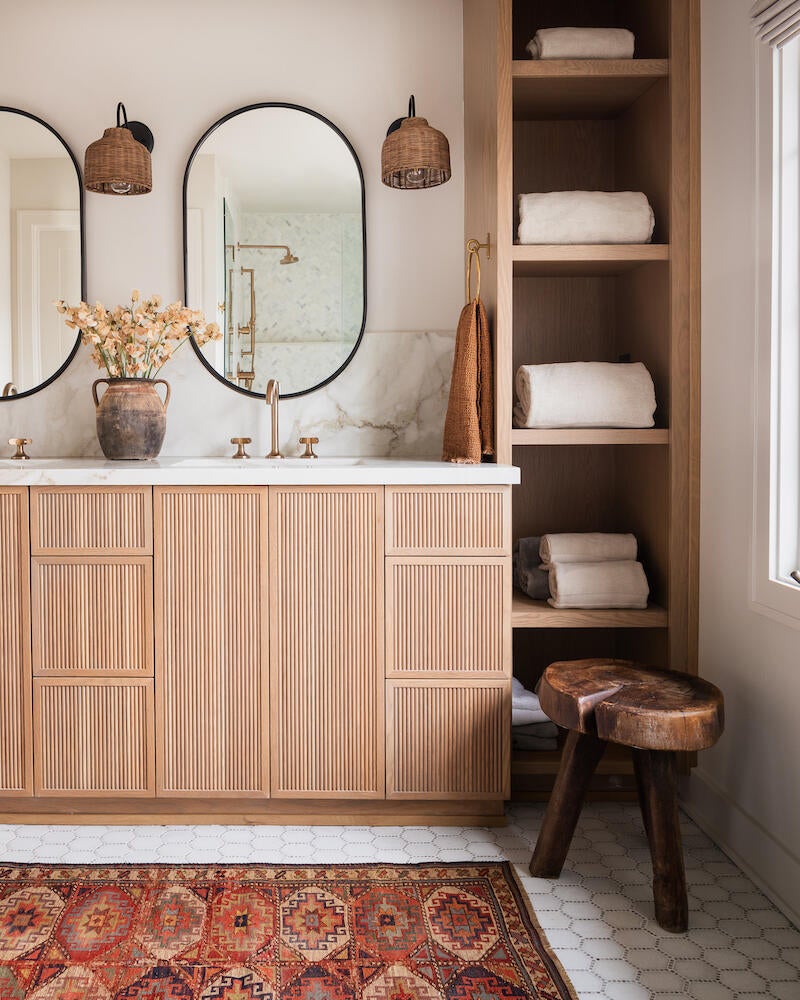
I’d imagine that changes your client relationships, too, when you don’t try to hide the fact that things will go wrong in the process sometimes.
You’re absolutely right. When we meet with our clients in the beginning, we always say, “Listen, think about life: Life is not perfect. It’s the same with interior design—there are always mistakes that are going to happen, but we will always make it right, and the end result is always going to be something that you love.” But that part also goes back to vetting clients—and not taking clients who are micromanagers. Perfectionists are not my client. They have to be a little easygoing. Although this is my business, it’s design—nobody’s dying. And I really want my clients to have that attitude. I’ve been through chemo and radiation, my son’s got type 1 diabetes, and all of that is a lot more important than a freaking $10,000 sofa.
Is it freeing to own that in the onboarding process?
It is so freeing, I have to tell you. I fired a client last year—it was the biggest project I had ever had—and I wasn’t even sad. She was so difficult that I had to fire her after the first presentation, because I knew it wasn’t going to go well—she was just a micromanager. Even though I was losing out on a ton of money, I was so proud of myself, and so happy that my team saw that I was taking care of myself and them, because they would have been treated awfully, and I didn’t want that to happen. When they have their own firm, I want them to be in the position that they can do that—that they can respect themselves and their firm enough, and know that money’s not everything.
What does success look like for you?
Success for me is pursuing my passion and being grateful and happy. I want my team to be happy. I want my clients to be happy. So for me, it’s not monetary at all. I feel like every time I think about the money side of my business, I go back a couple of steps because [the motivation is] not coming from where it should come from. Success is speaking from my heart—being honest with my clients, being honest with myself and trusting my intuition.
To learn more about Heidi Woodman, visit her website or find her on Instagram.
















